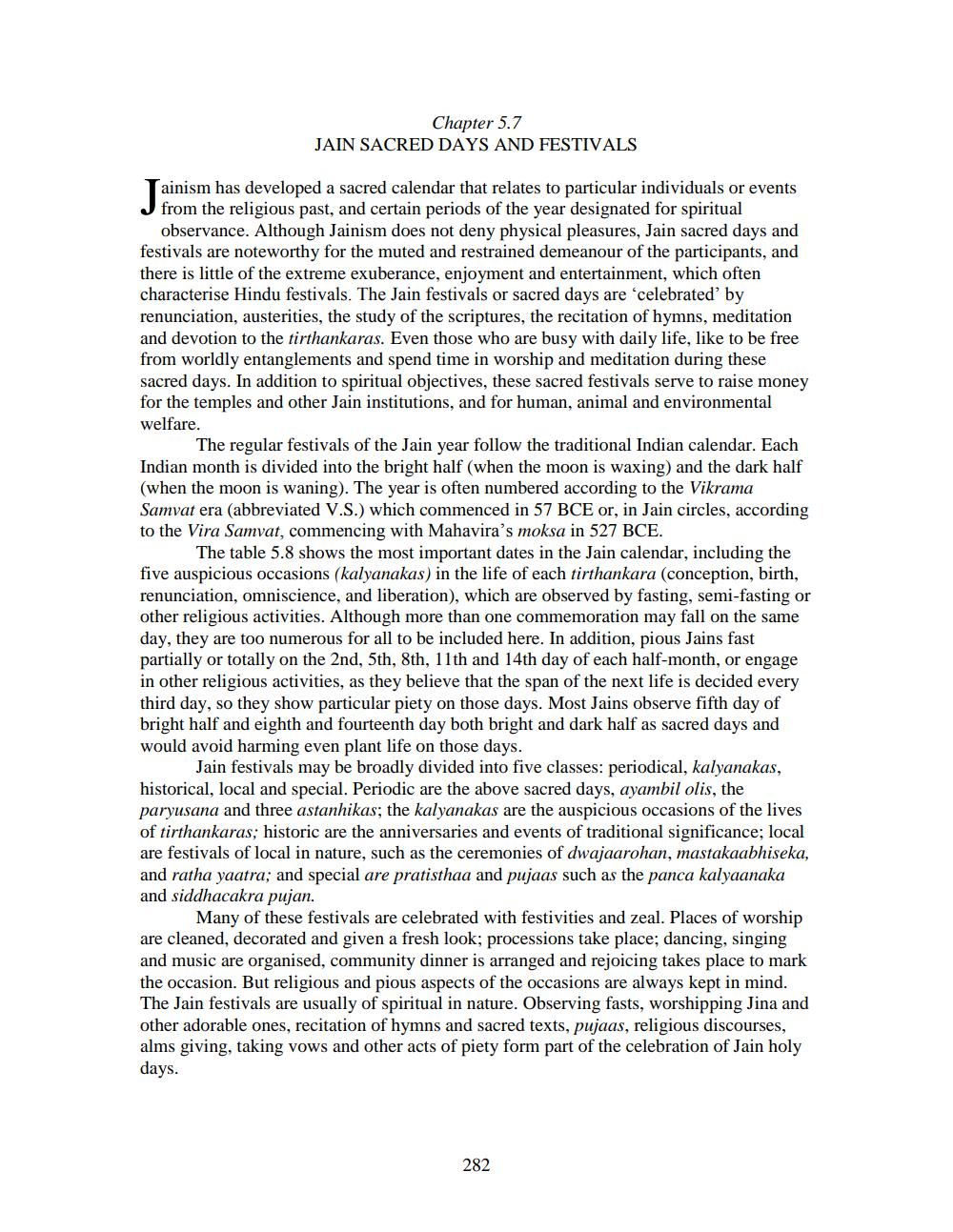________________
Chapter 5.7 JAIN SACRED DAYS AND FESTIVALS
ainism has developed a sacred calendar that relates to particular individuals or events from the religious past, and certain periods of the year designated for spiritual
observance. Although Jainism does not deny physical pleasures, Jain sacred days and festivals are noteworthy for the muted and restrained demeanour of the participants, and there is little of the extreme exuberance, enjoyment and entertainment, which often characterise Hindu festivals. The Jain festivals or sacred days are 'celebrated' by renunciation, austerities, the study of the scriptures, the recitation of hymns, meditation and devotion to the tirthankaras. Even those who are busy with daily life, like to be free from worldly entanglements and spend time in worship and meditation during these sacred days. In addition to spiritual objectives, these sacred festivals serve to raise money for the temples and other Jain institutions, and for human, animal and environmental welfare.
The regular festivals of the Jain year follow the traditional Indian calendar. Each Indian month is divided into the bright half (when the moon is waxing) and the dark half (when the moon is waning). The year is often numbered according to the Vikrama Samvat era (abbreviated V.S.) which commenced in 57 BCE or, in Jain circles, according to the Vira Samvat, commencing with Mahavira's moksa in 527 BCE.
The table 5.8 shows the most important dates in the Jain calendar, including the five auspicious occasions (kalyanakas) in the life of each tirthankara (conception, birth, renunciation, omniscience, and liberation), which are observed by fasting, semi-fasting or other religious activities. Although more than one commemoration may fall on the same day, they are too numerous for all to be included here. In addition, pious Jains fast partially or totally on the 2nd, 5th, 8th, 11th and 14th day of each half-month, or engage in other religious activities, as they believe that the span of the next life is decided every third day, so they show particular piety on those days. Most Jains observe fifth day of bright half and eighth and fourteenth day both bright and dark half as sacred days and would avoid harming even plant life on those days.
Jain festivals may be broadly divided into five classes: periodical, kalyanakas, historical, local and special. Periodic are the above sacred days, ayambil olis, the paryusana and three astanhikas; the kalyanakas are the auspicious occasions of the lives of tirthankaras; historic are the anniversaries and events of traditional significance; local are festivals of local in nature, such as the ceremonies of dwajaarohan, mastakaabhiseka, and ratha yaatra; and special are pratisthaa and pujaas such as the panca kalyaanaka and siddhacakra pujan.
Many of these festivals are celebrated with festivities and zeal. Places of worship are cleaned, decorated and given a fresh look; processions take place; dancing, singing and music are organised, community dinner is arranged and rejoicing takes place to mark the occasion. But religious and pious aspects of the occasions are always kept in mind. The Jain festivals are usually of spiritual in nature. Observing fasts, worshipping Jina and other adorable ones, recitation of hymns and sacred texts, pujaas, religious discourses, alms giving, taking vows and other acts of piety form part of the celebration of Jain holy days.
282




